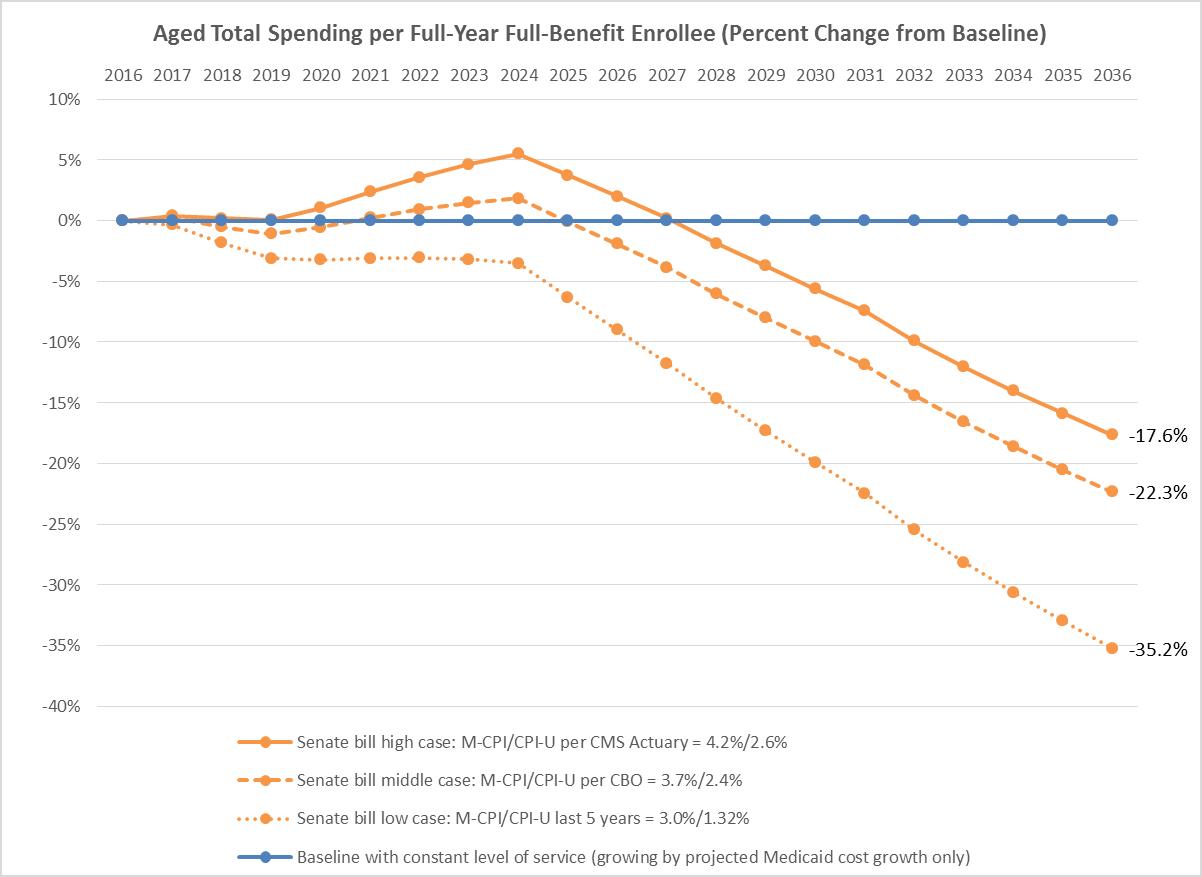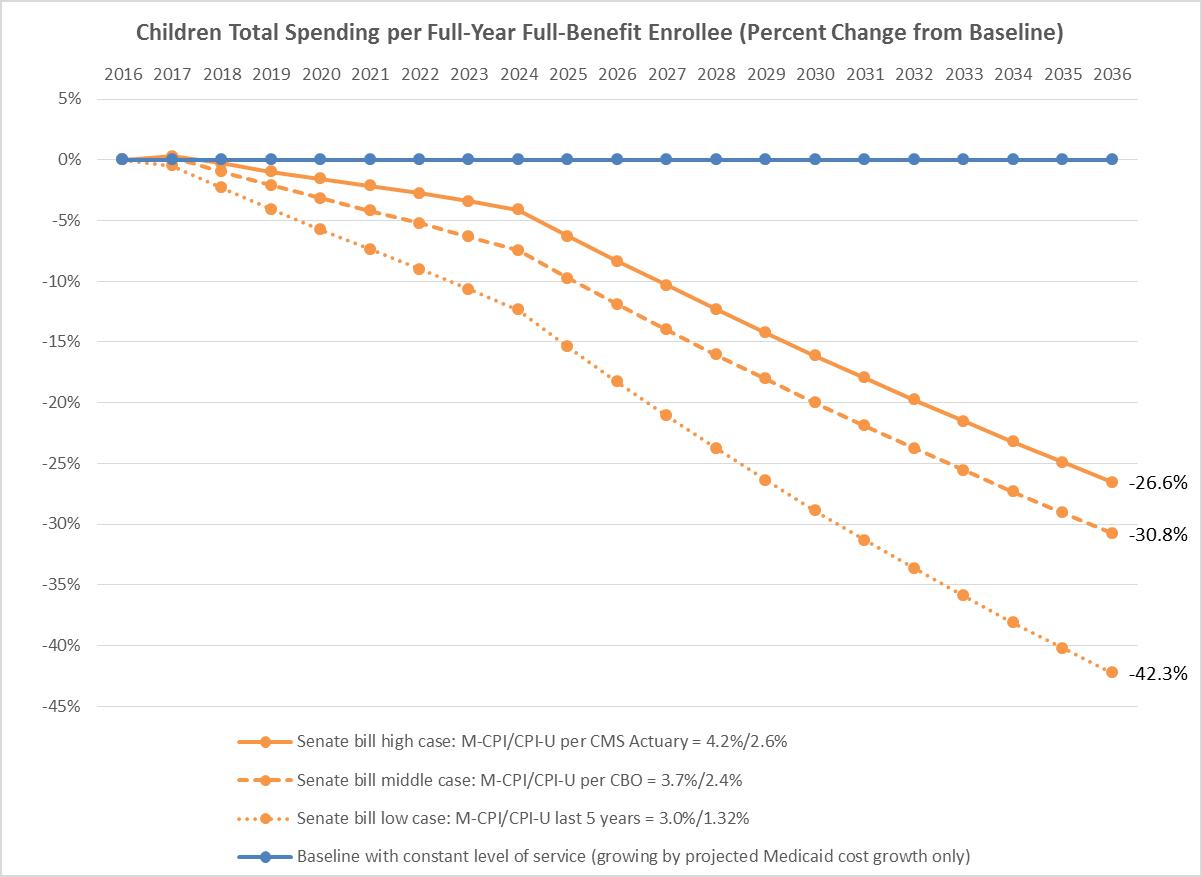AARP Hearing Center
This Cut is Really a Cut: Senate Bill Will Slash Medicaid Spending across All Populations
By Brendan Flinn, Lynda Flowers, Jean Accius, Ari Houser, June 30, 2017 05:01 PM
The recently released Senate bill, the Better Care Reconciliation Act (BCRA), puts Medicaid on the chopping block. By limiting Medicaid cost growth to medical inflation through 2024 and general inflation from 2025 and beyond, the bill will lead to major, harmful reductions in both federal and state Medicaid spending. Even the non-partisan Congressional Budget Office determined that Medicaid spending under the BCRA would be 26 percent lower in 2026 than it would be under current law, and the gap would widen to about 35 percent by 2036. This significant cut to the program will have negative impacts on older adults, adults with disabilities, and individuals and families who rely on Medicaid to meet their health care and long-term services and supports needs.
Recent AARP Public Policy Institute projections demonstrate that the per capita cap proposal in the BCRA will cut between $2.0 trillion and $3.8 trillion from total (federal and state) Medicaid spending over the 20-year period between 2017 and 2036 for the four non-expansion Medicaid enrollment groups: older adults, adults with disabilities, non-disabled children under age 19, and non-expansion adults (children with disabilities are excluded because BCRA does not subject them to capped funding). The projections do not include the proposed cuts to the adult Medicaid expansion population, which would also be considerable for those states that have expanded coverage.
Some policymakers have suggested that the per capita cap proposal does not actually cut Medicaid, since aggregate Medicaid spending will continue to increase. Assertions like these, however, belie the fact that under current law, Medicaid spending will grow at a higher rate to accommodate population growth and increased enrollment, the aging of the 65+ population and, critically, the increasing cost of health care and LTSS across all populations. On a per enrollee basis, the BCRA would impose deep cuts on Medicaid making it impossible for future enrollees to receive the same level of care they receive today.
According to analysis from the AARP Public Policy Institute, Medicaid cuts as a result of the per capita caps in BCRA (not including the expansion repeal) could be as much as 16 percent in 2026 and 41 percent in 2036 across all populations. For older adults, per enrollee cuts could be as high as 9 percent in 2026 and 35 percent in 2036.
See Table 1 below for full details. We present the high, middle, and low case for M-CPI/CPI-U growth rates based on the following:
- Low Case. Based on historical growth rates. Over the last five years (2012-2016), the M-CPI growth rate has averaged 3.0% per year, and the CPI-U growth rate has averaged 1.32% per year.
- Middle Case. Based on projections from the Congressional Budget Office. CBO projects M-CPI to grow by 3.7% per year, and CPI-U by 2.4% per year.
- High Case. Based on projections from 2016 CMS Medicaid Actuarial Report. From 2019 onward, this report projects M-CPI to grow by 4.2% per year, and CPI-U by 2.6% per year.

In addition to Table 1, new graphs from the AARP Public Policy Institute illustrate the BCRA’s proposed cuts to Medicaid and show that for all affected populations—older adults, adults with disabilities, children, and non-expansion adults—the proposed cuts to Medicaid are, in fact, a cut—and one that will hurt.







Jean Accius is vice president of livable communities and long-term services and supports for the AARP Public Policy Institute. He works on Medicaid and long-term care issues.
































































